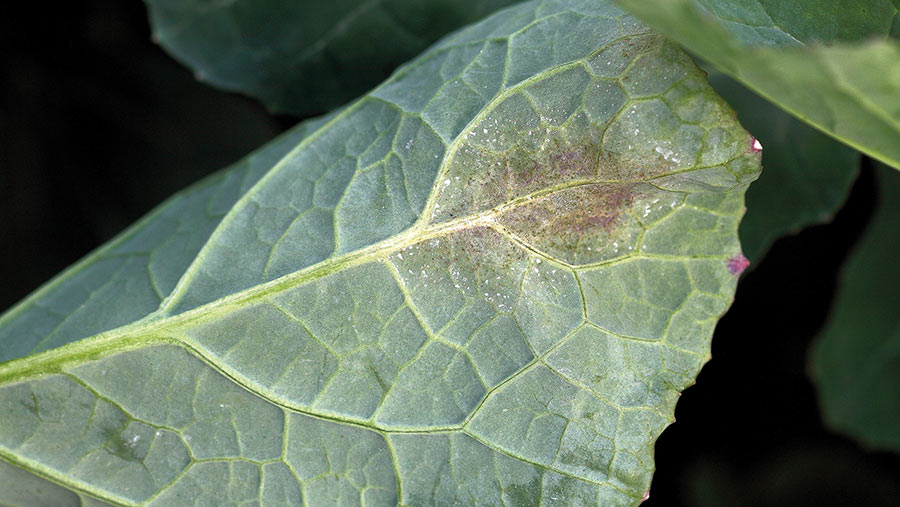Rapid test available for light leaf spot in OSR this autumn
 © Blackthorn Arable
© Blackthorn Arable Oilseed rape growers will be able to use a new rapid test this autumn for the most costly disease affecting the crop, enabing better targeted fungicide applications.
Light leaf spot can cause yield losses of up to 30% and farmers can avoid these costly losses with a well-timed application of a fungicide.
However, by the time symptoms are seen, fungicide treatments are less effective.
See also: What OSR varieties with new phoma-resistance gene offer
To help solve this by detecting disease earlier, Microgenetics has created a new rapid test based on DNA, which it claims is the fastest, most accurate test on the market for light leaf spot.
“Before the test, it was impossible to identify the best time to apply fungicide as once signs of light leaf spot are visible, they aren’t as effective,” says Chris Steele, crop product manager at Microgenetics.
He believes the earlier detection will optimise fungicide efficacy and better target fields with high and early levels of the disease. “This can potentially reduce overall cost and minimise crop protection use.”
Trials
Trials conducted with Scotland’s Rural College (SRUC) and the AD4PT Group in Nottinghamshire monitored several oilseed rape varieties with different resistance scores, with some surprising results.
Andrew Hartley, arable technical manager for DSV United Kingdom, was involved with the trials and says that using the test to identify when disease is not present is as valuable as when it is.
Mr Hartley says the hardest decision in agriculture is always not to do something.
“Many farmers, myself included, have been guilty of spraying crops on a predetermined particular calendar date, with sometimes little knowledge of whether or not disease is in the plant.
“If you have information that definitely tells you there’s no disease, then the likelihood is you wouldn’t spray for that disease, which would save you time and money, and would be better for the environment.”
Rainfall is currently used by many as a way of predicting the likelihood of light leaf spot occurring. However, data from the trials revealed that this isn’t a reliable means of forecasting.
“The trials revealed a positive link between rainfall and light leaf spot detection. However, none was found in one variety, Dart, despite high levels of rain,” says Mr Steele.
Favourable environmental conditions do not guarantee disease presence, he explains, which is why the new test will prove an invaluable tool.
The testing service will be available from 12 September with a one business-day turnaround.

